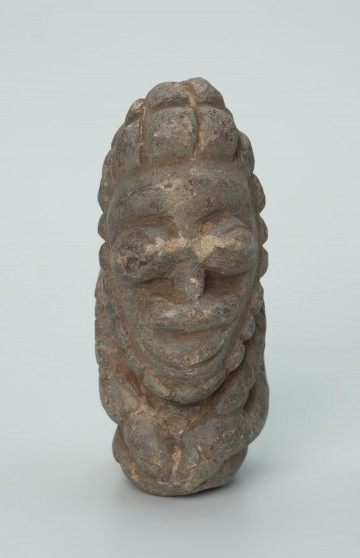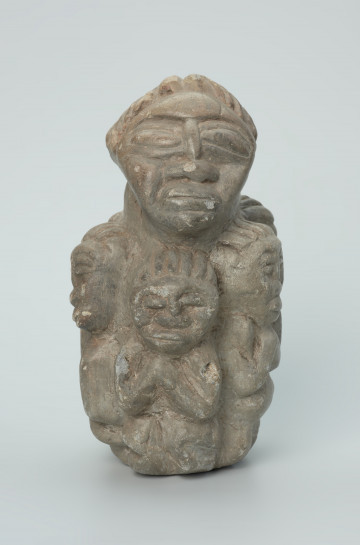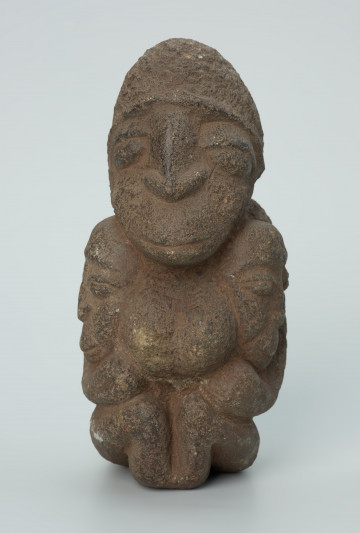
Figure of cult of dead
1901 — 1969
National Museum in Szczecin
Part of the collection: Stone figurines from West Africa
The sculpture, associated with the cult of the dead, called pomdo in the Kissi language (plural pomda or pomta), depicts a human figure sitting with his legs contracted, holding unidentified objects shaped like hoes in his hands. The figure was carved in soapstone, a soft microcrystalline rock. The African stone sculpture refers to the symbolic properties of this raw material, which is considered durable and indestructible. The symbolism of the individual elements of the sculpture and the attributes of the figures is vital. The statue of pomdo has a large, elongated head, the top of which is repeatedly encircled by a spiral. It may be a way of depicting the hairstyle or the headgear of the figure, which, as the essential part of the body, the seat of the human soul and thoughts, often occupies the most space. The emphasised abdomen, navel and genitals are treated as symbols of procreation, the connection of generations. On the other hand, the headgear, hairstyle, walking stick or other attributes are meant to point to an individual, his position and social role.The Kissi regard pomda sculptures as manifestations of their dead ancestors. They place them on family cult altars. Some of them are placed in the owner's grave after his death. It usually involves figurines fitted with magical objects, such as arrowhead blades or hoes.
Katarzyna Findlik-Gawron
Author / creator
Dimensions
cały obiekt: height: 21,8 cm, width: 9,3 cm
Object type
figure
Creation time / dating
Creation / finding place
Identification number
Location / status

1901 — 1969
National Museum in Szczecin

1901 — 1973
National Museum in Szczecin

1901 — 1973
National Museum in Szczecin
DISCOVER this TOPIC
Museum of King Jan III's Palace at Wilanów
DISCOVER this PATH
Educational path